NEXTORCH P80 review
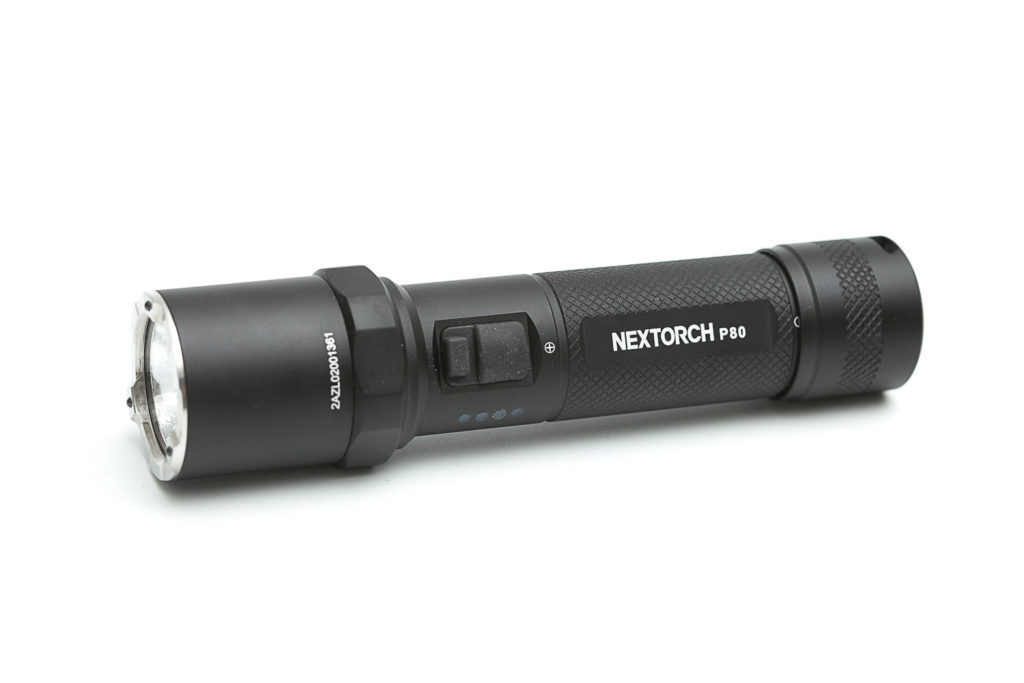
Specifications
| Brand / Model | NEXTORCH P80 |
|---|---|
| LED | OSRAM |
| Lumens | 1300 lm |
| Beam distance | 280 meters |
| Battery config. | 1*18650 |
| Material | Aluminum |
| Modes | 3 |
| Blinkies | 1 |
| Reflector | LOP |
| Waterproof | IPX7 |
| Review date | May 2020 |
Introduction:
NEXTORCH is a brand that builds all kinds of outdoor equipment. Flashlights, headlights, batons, and tactical pens. This time I received a pretty thick-looking flashlight for review. My first thought: a 21700 dive light. But upon closer inspection, it’s a tactical 18650 flashlight.
Hmmm. It looks a little unusual so I’m eager to learn more.
What you’ll get:
- NEXTORCH P80
- 18650 protected battery
- USB-C cable
- Lanyard
- O-rings
- Manual
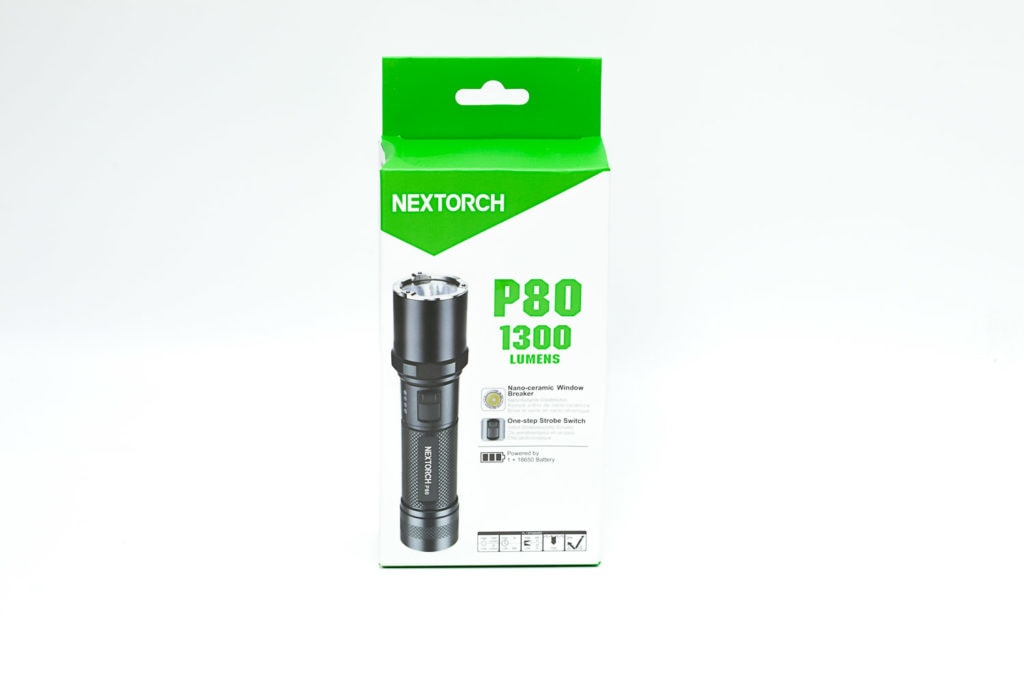
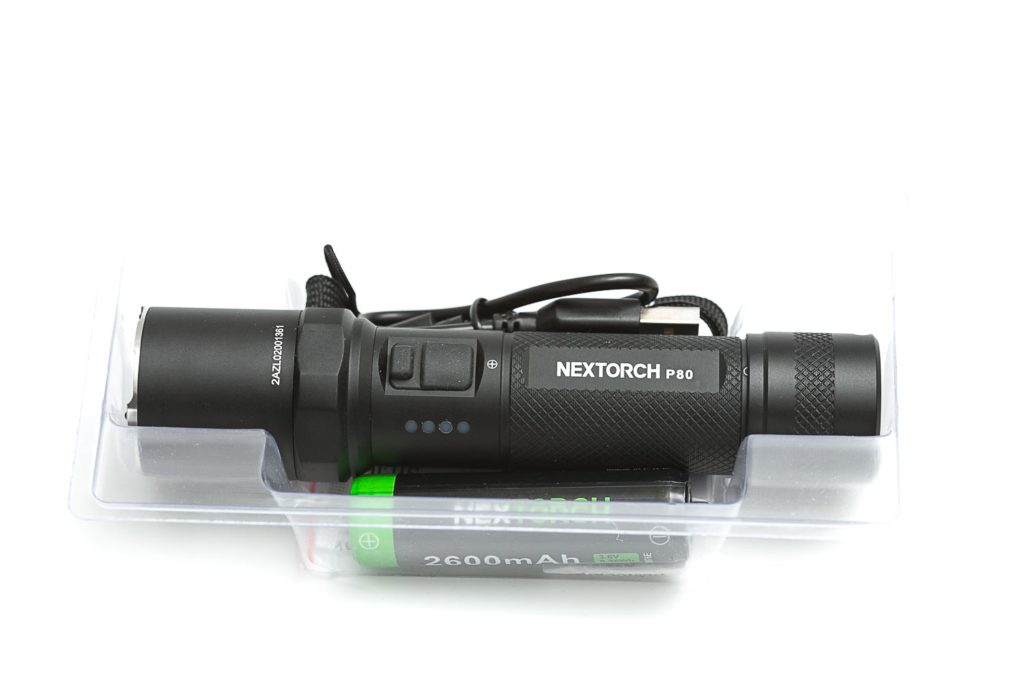
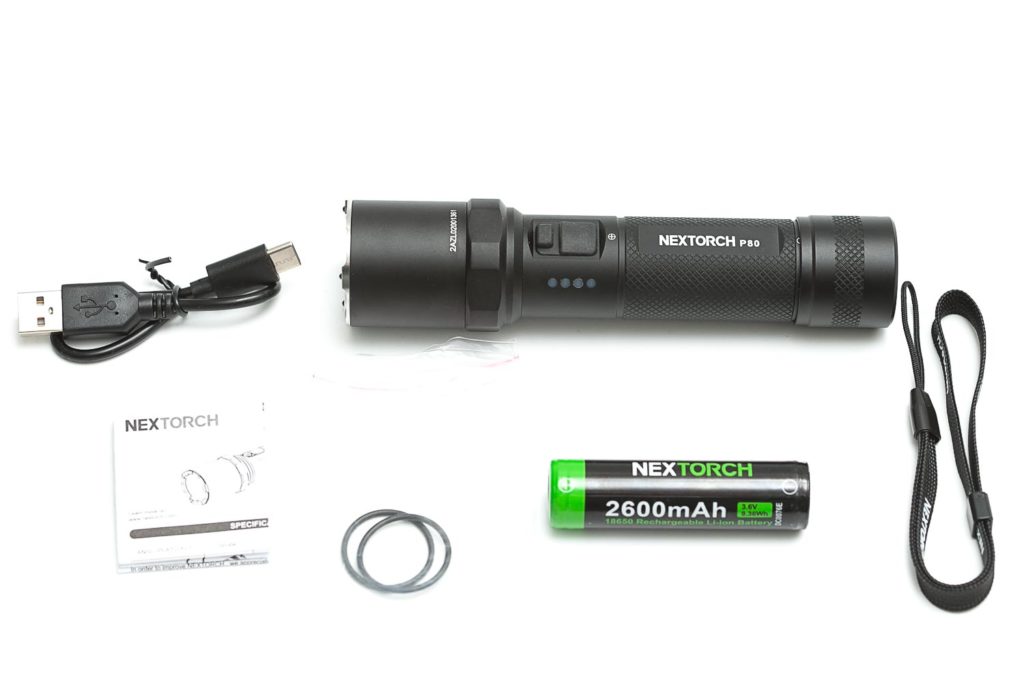
Handling of the light
The width of the battery tube got me thinking it’s a 21700 light but in reality, it only fits 18650 batteries. The positive thing about this is the grip. I like the extra width so it fits better in my hand. The con is that is has extra weight and could actually fit a 21700 battery with more capacity.
This type of switch makes it really easy to find, even in the dark. But you can’t really use it while using gloves, so keep that in mind. The top switch is sticking out a little and is only used for Strobe. The bottom switch, just below the top switch, isn’t sticking out as much and is used for power and mode-switching. While the Strobe switch is a reverse-clicky, the power switch is a forward-clicky. The power switch has a momentary-on feature with High mode and no memory.
NEXTORCH didn’t include a pocket clip (and there is no space for that because of its design) nor a holster. But NEXTORCH included a NEXTORCH V5 holster for on a belt. It’s a plastic adjustable holster. Although the P80 fits, it’s probably the maxium width it accepts. Great for guard work and first-responders since you don’t need to open a velcro flap but quickly unleash the lock system with 1 finger and grab the flashlight. They also do have a V10 holster that is like the usual nylon + velcro in case you prefer that.
I tested the lanyard by pulling 5 times really strong and it didn’t budge so I guess it’s strong enough. If you care about tail-standing, the P80 is pretty stable since its tailcap is flat.
When you charge the battery, you need to unscrew the head. Once it’s unscrewed a USB-C port is accessible. But we’ll talk about that later.

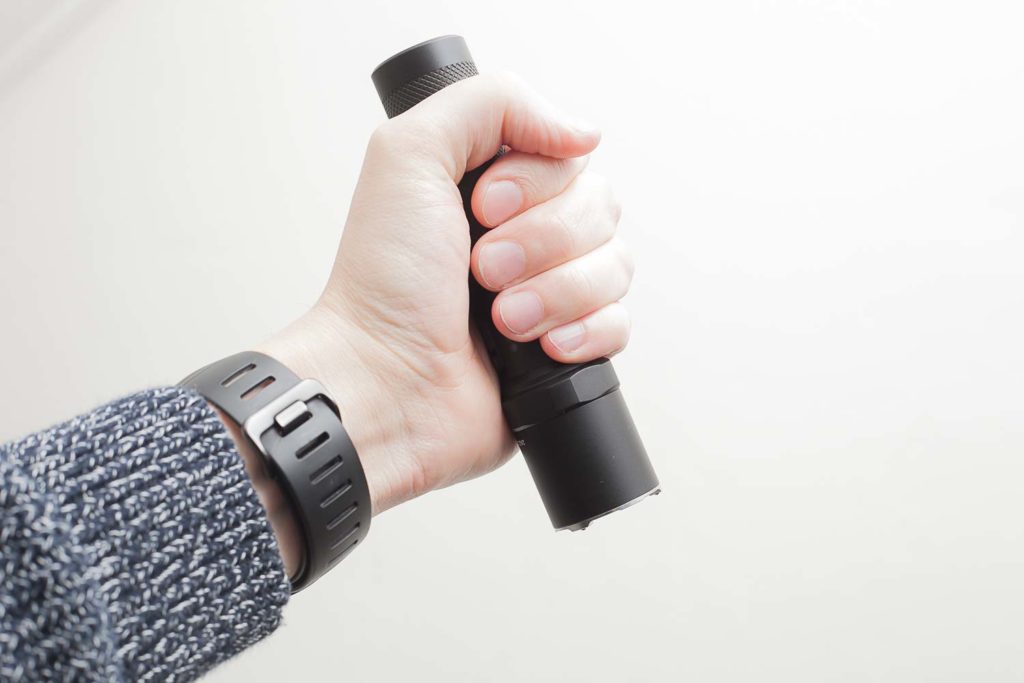
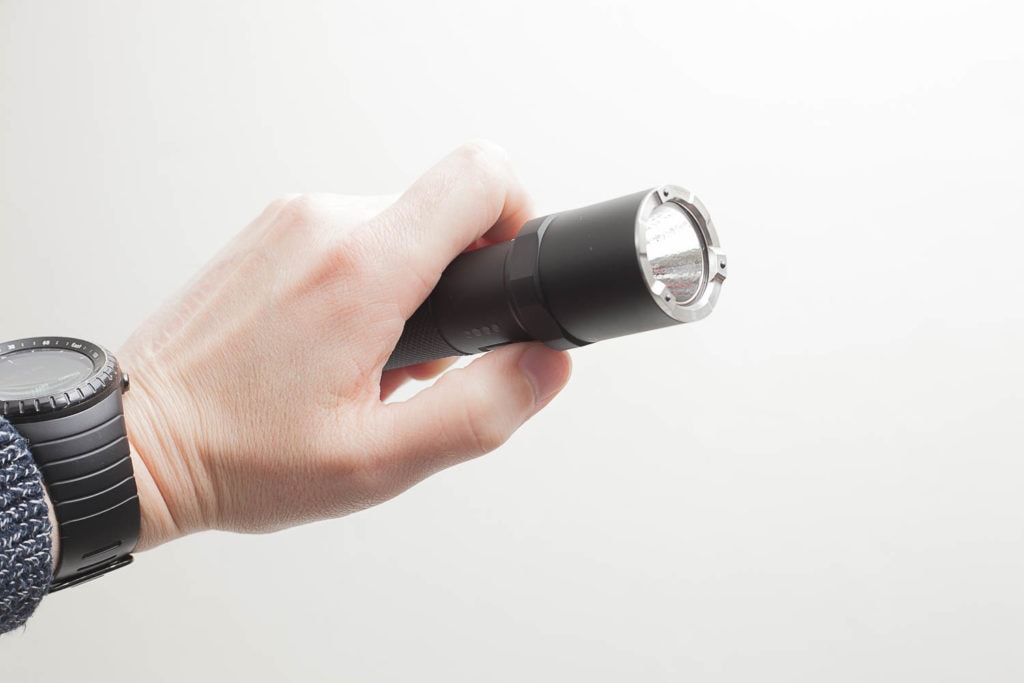

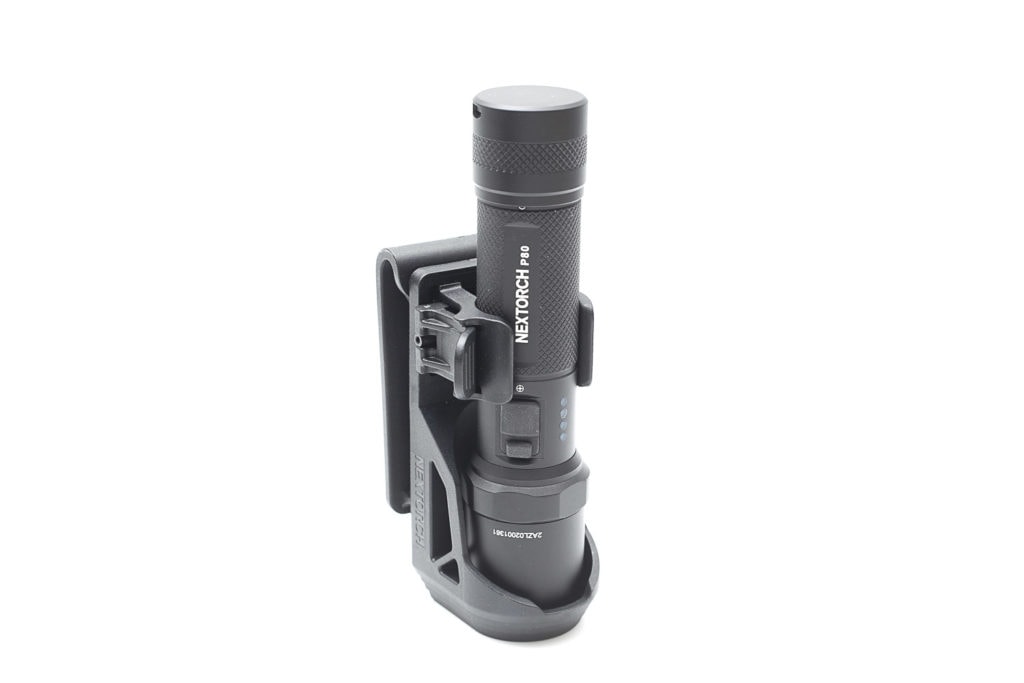
Build Quality, knurling, threads, and anodization
There is nothing to complain about the build quality of the P80. All parts fit well together. Threads are anodized and lubed.
One thing that drew my attention is the way the tailcap and spring are made. It looks like the spring holds itself in place in a tiny ridge inside the bottom of the tailcap. You can’t unscrew it, so I assume you’ll have to pry it out if you ever want to take the spring out. Hmm interesting.
The body tube is really thick, so I assume it can handle some abuse. The anodization seems very solid all across the light.
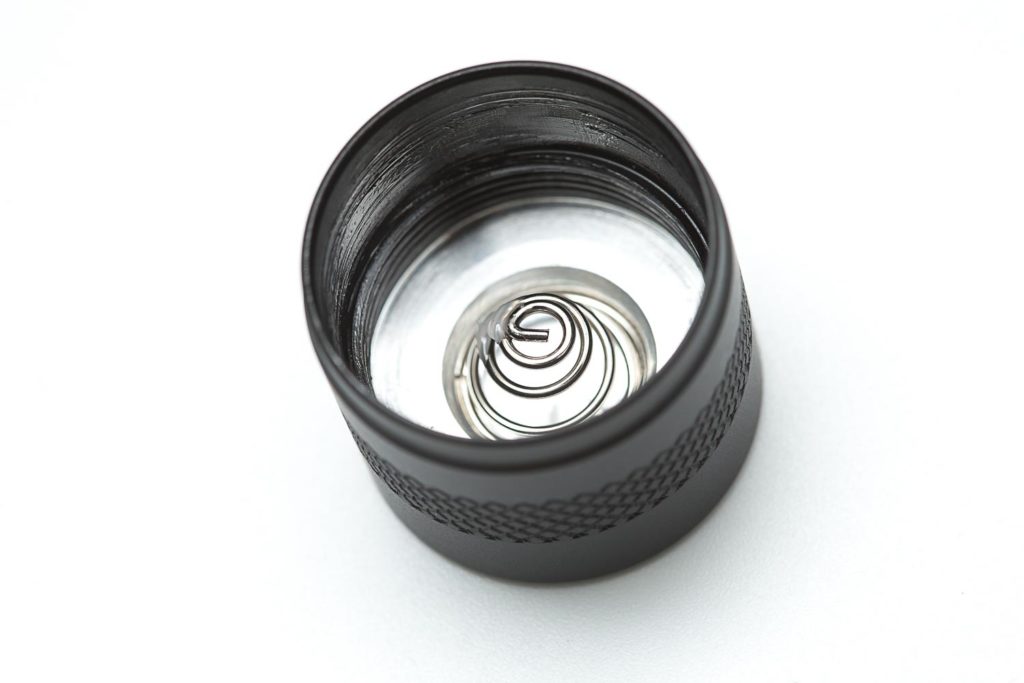
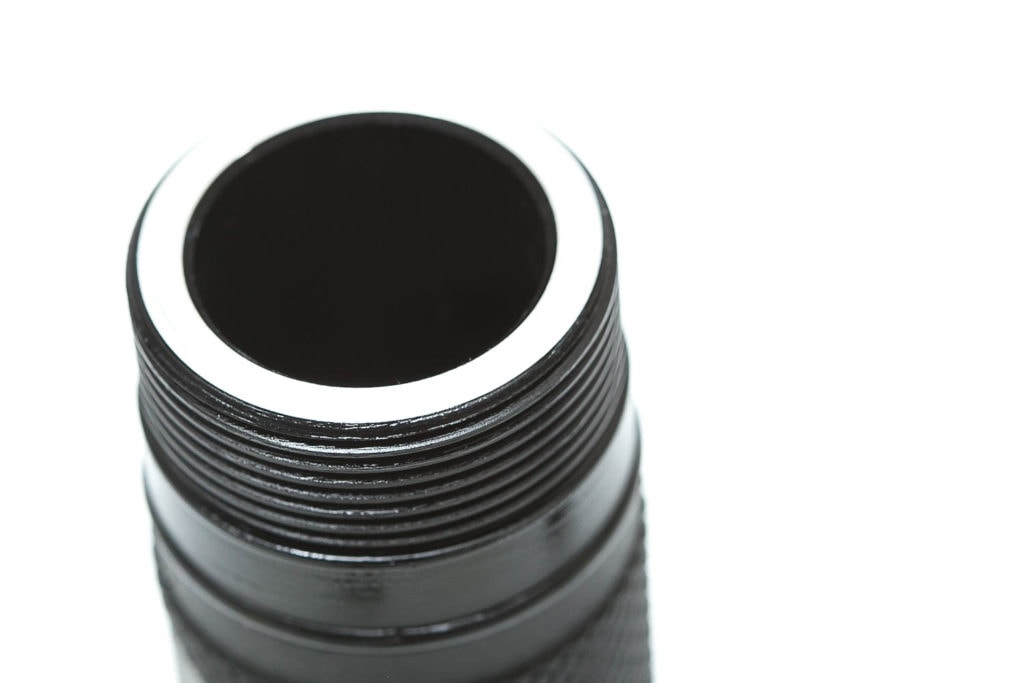

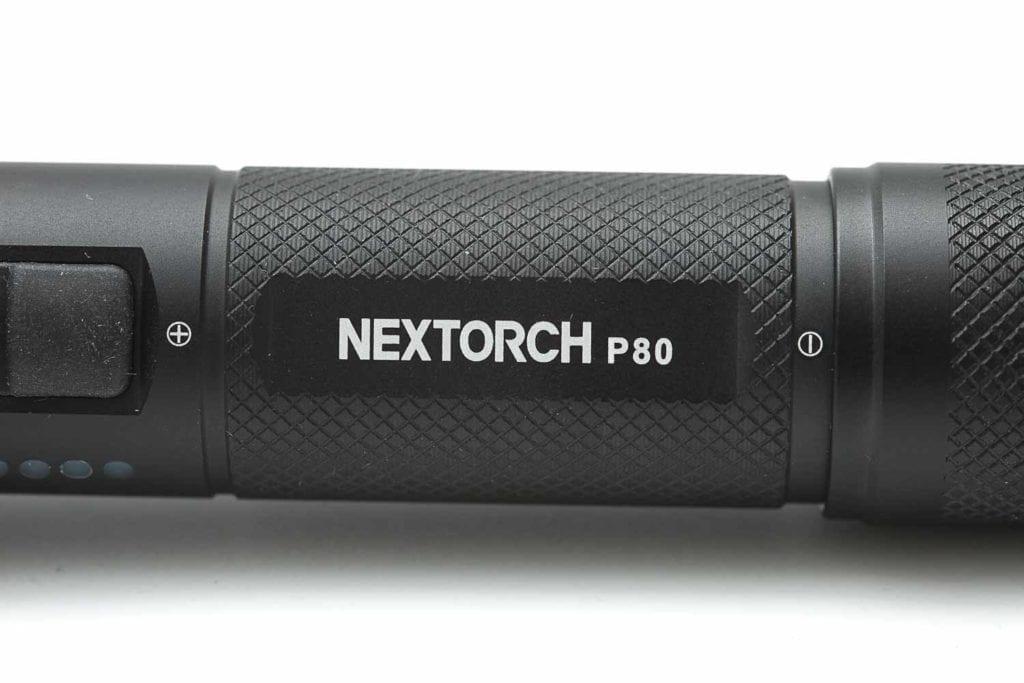
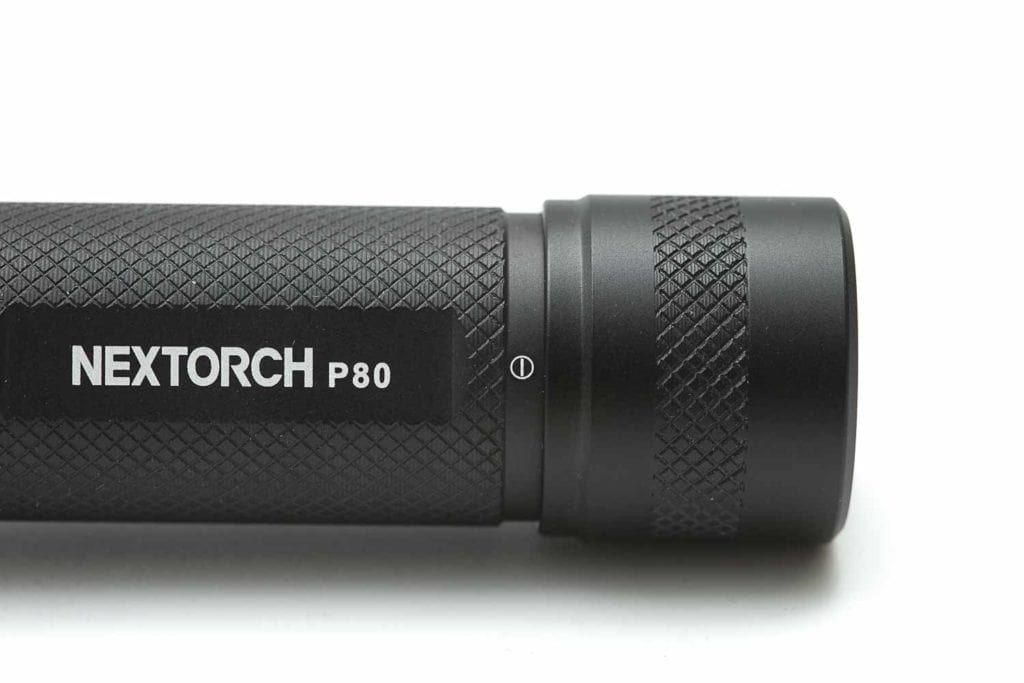
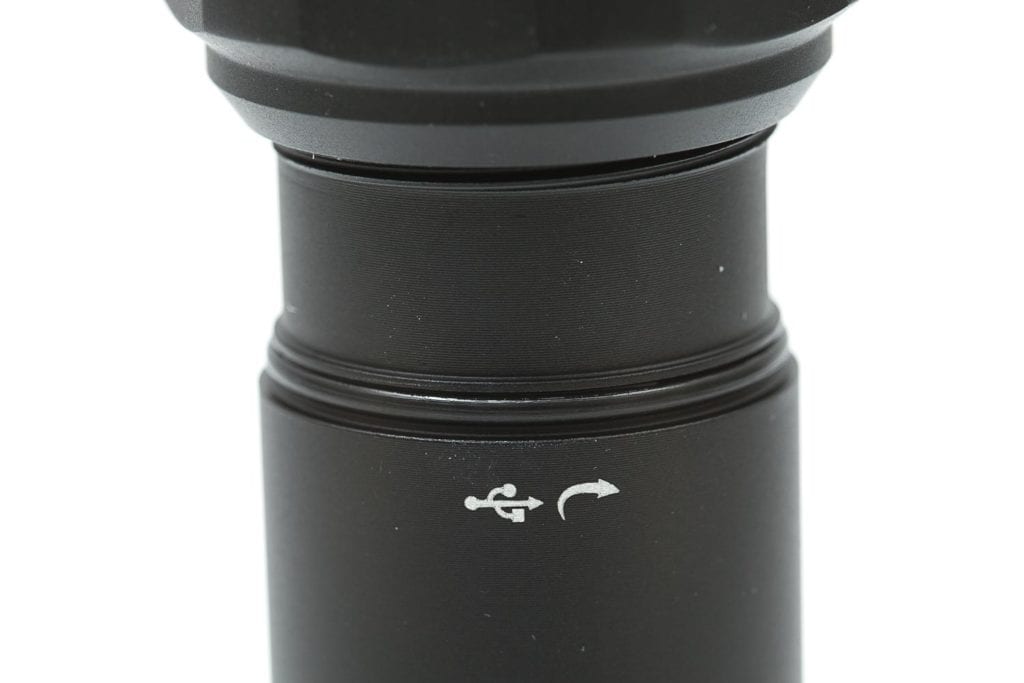
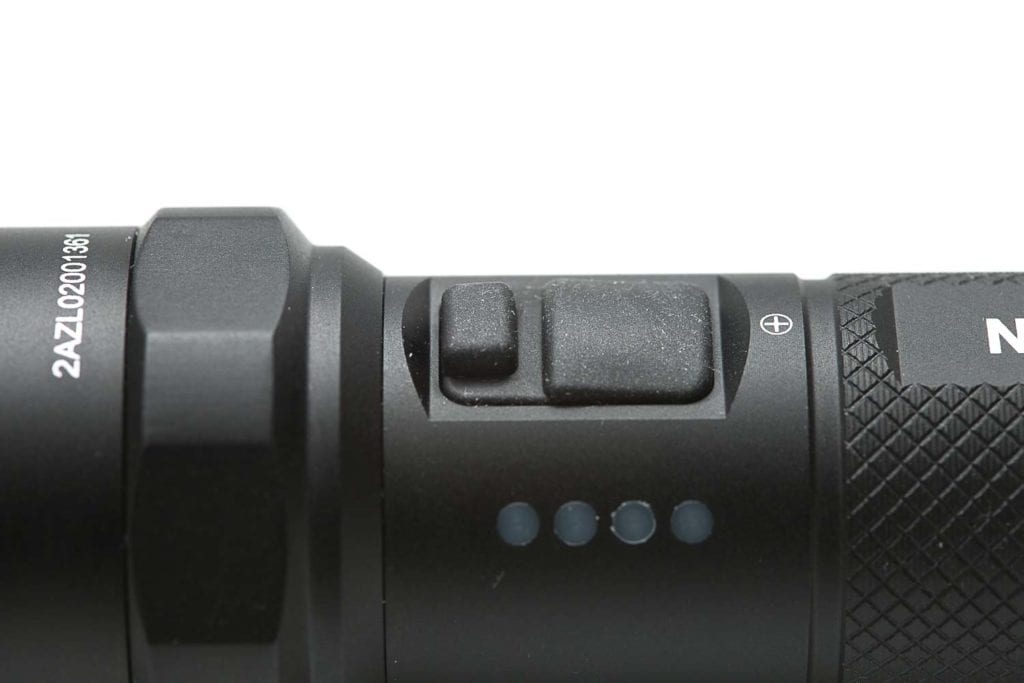
LEDs, Lens, Bezel, and Reflector
Instead of using the famous CREE LEDs, NEXTORCH decided to use an Osram P9 instead. In terms of brightness, it’s pretty decent and in the range of a CREE XPL Led. The beam has a little greenish shift in the hotspot and a slightly purplish tint shift towards the edges of the spill.
It has an orange-peel reflector to smooth out the beam and the shape of the bezel gives the beam some sort of crenelated shape. The bezel itself is made of stainless steel and has 3 little spikes for breaking glass or self-protection? NEXTORCH’s website states: strike bezel with nano-ceramic beads. The LED is centered with a white centering ring.
One thing I noticed relatively quickly is the plastic lens. After inquiring at NEXTORCH , they told me it’s a PA lens. This means they are more impact-resistant and lightweight.
For more info on the LED performance, scroll down to the Performance section.
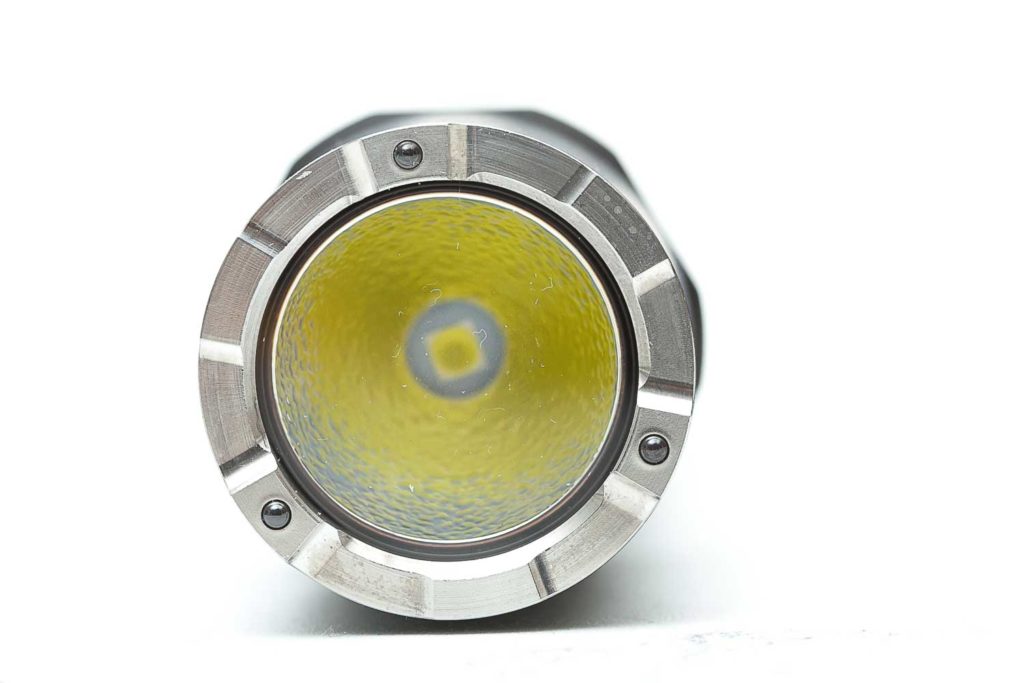
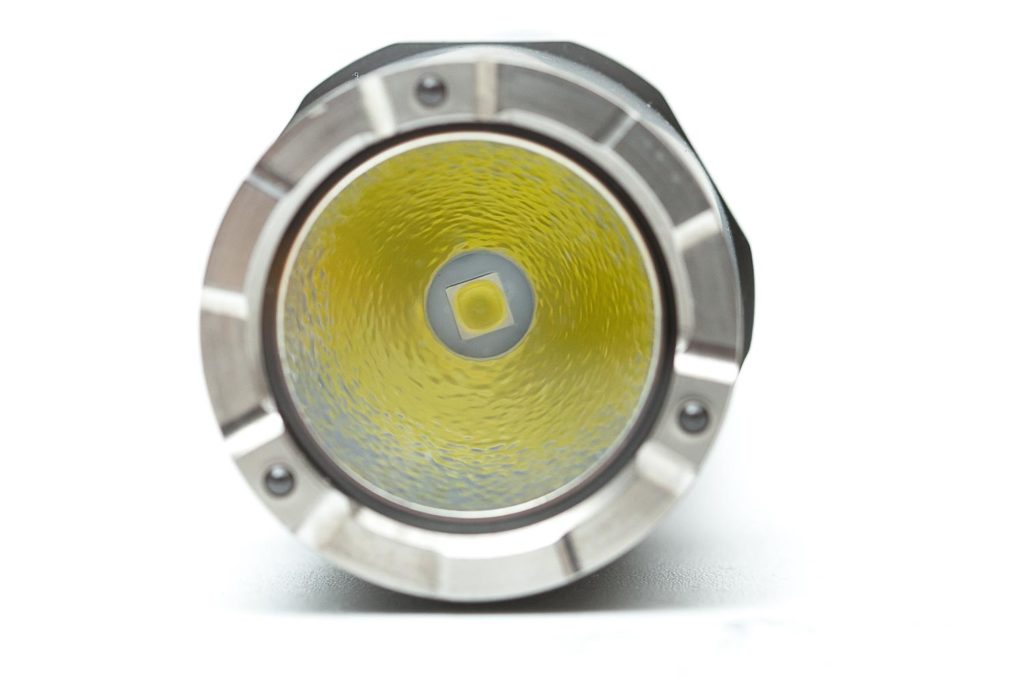
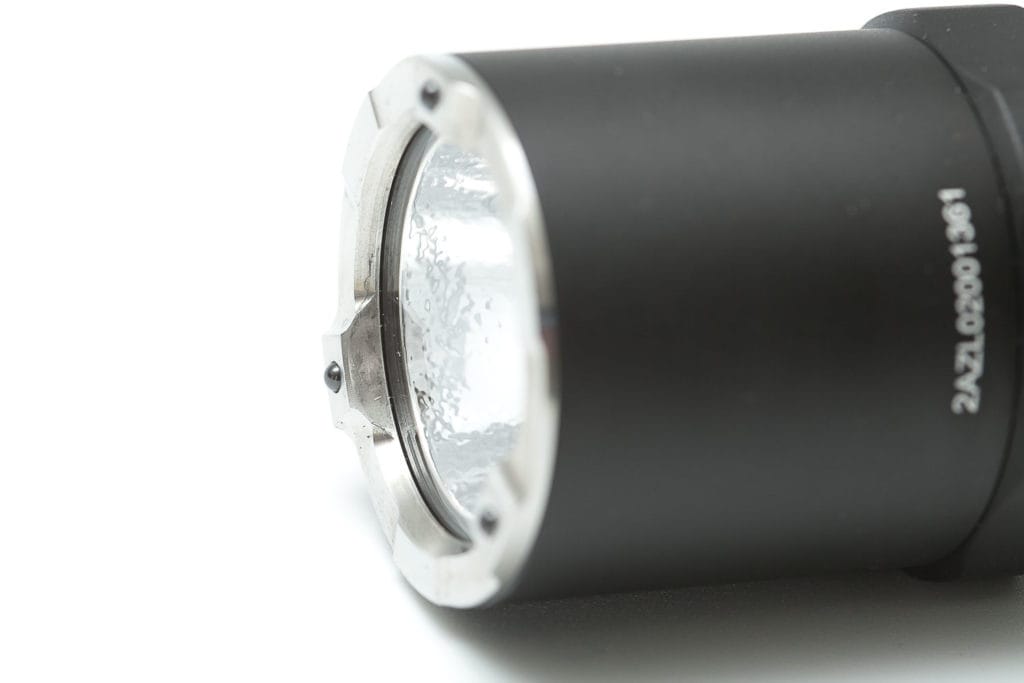
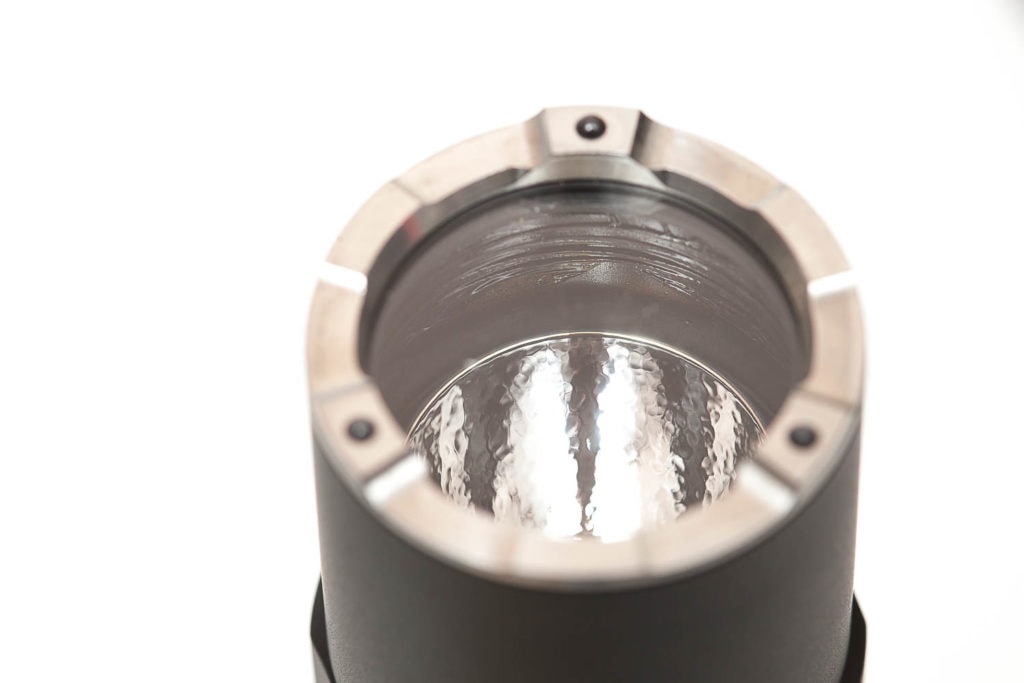
Dimensions:
- Length: 152 mm /6”
- Head diameter: 35 mm / 1.38”
- Body diameter: 26.5 mm / 1.045″
- Tailcap dimater: 31mm / 1.223″
Weight:
- Empty: 180.3 g /6.36 oz
- With battery: 230.1 g / 8.12oz
- Battery: 49.8g / 1.76oz
Size comparison with other Tactical Flashlights
Size compared to other Tactical Flashlights:
From left to right: Fenix PD35 TAC (18650), Olight M2R PRO (21700), Thrunite TN12 v4 (18650) , Olight Warrior X PRO (21700) , Nitecore MH25GTS (18650) , NEXTORCH P80 (18650).
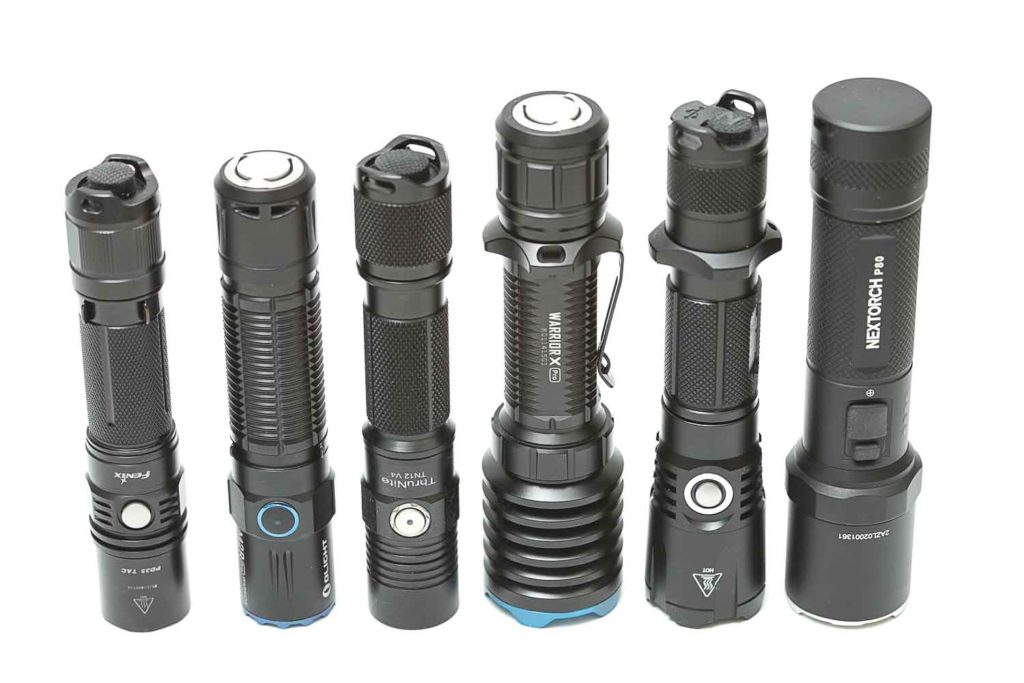
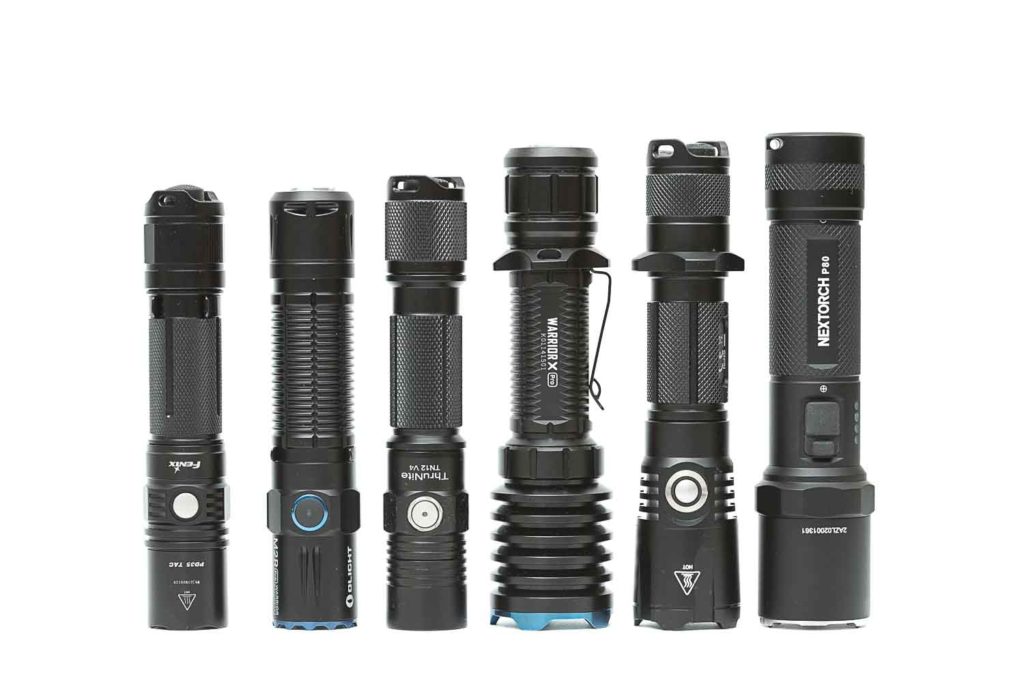
Driver & User Interface:
The NEXTORCH P80 has 2 buttons, close to each other. The top one (the one that is sticking out) is for Strobe and the larger button for power and mode switching. For the sake of clarity, I will call the top one a Strobe switch because that’s all it does.
The Strobe switch is a reverse clicky and the power switch is a forward clicky!
This UI works a little differently. The P80 always starts on Medium, then Low, and then High etc. But when you switch it on, it will shortly be in High (because of momentary on) and with a full click, it starts in Medium. So the actual menu starts in medium.
Available modes:
- Low, Medium, High
- Strobe
From OFF: Strobe switch:
- Half-press: nothing
- Single-click: Strobe
- Double click: Off again
From ON: Strobe Switch:
- Half-press: nothing
- Single-click: Strobe
- Double click: back to last used mode
From OFF: Power switch:
- Half-press: High (Momentary On, it’s a forward clicky)
- Single-click: Medium (but while clicking it’s using the half press for high as well, so it is shortly in High mode until you fully click)
- Double click: Off again… like every normal forward clicky switch.
From ON: Power switch:
- Half-press: mode switching
- Single-click: Off
- Double click: On again… like every normal forward clicky switch.
Mode memory:
- There is no mode memory. It always starts in Medium
Blinky modes menu:
- Yes, accessible from On and Off by clicking the Strobe Switch.
Low battery warning:
- Side LED lights will blink red when battery runs low, but continue blinking after the light has switched off because of the low battery
- Output also gradually decreases so you can notice that while using the light
Lock-out mode:
- No, but you can unscrew the tailcap to stop any parasitic drain.
PWM:
- Definitely not visible by eye
Firmware / UI Conclusion:
This UI is a little different from other lights I have. The start in Medium with the High mode briefly enabled makes it a little unusual. Also, no shortcuts to low is worth noting. If you care about always having access to Strobe or High (momentary on), this will fit the bill. Since it’s not an EDC light but rather a Tactical flashlight, I can understand this type of UI is not for everyone.
Batteries and charging:
The NEXTORCH P80 uses a USB-C charge port to charge the battery internally. Since it uses spring on the driver side as well as the tailcap, you can use flat top and button top cells. Protected and unprotected.
When the light turns off, a red light keeps flickering to indicate a low battery. After the runtime, the battery was at 2.9V.
The parasitic drain is about 10.9µA. This is very low, so you don’t need to worry too much about draining the battery when not in use.
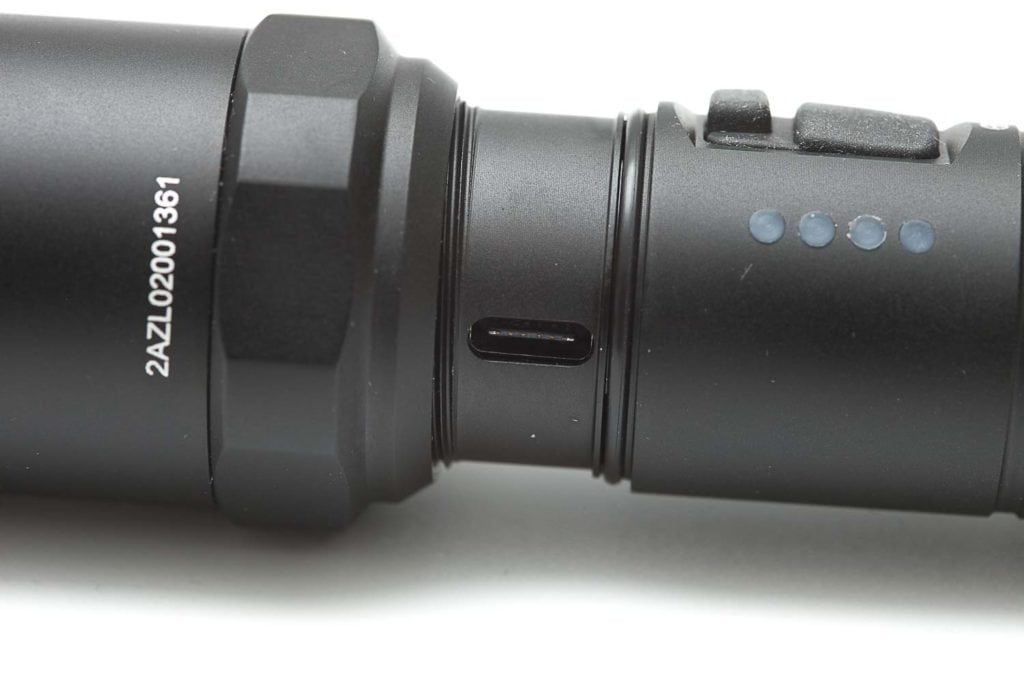
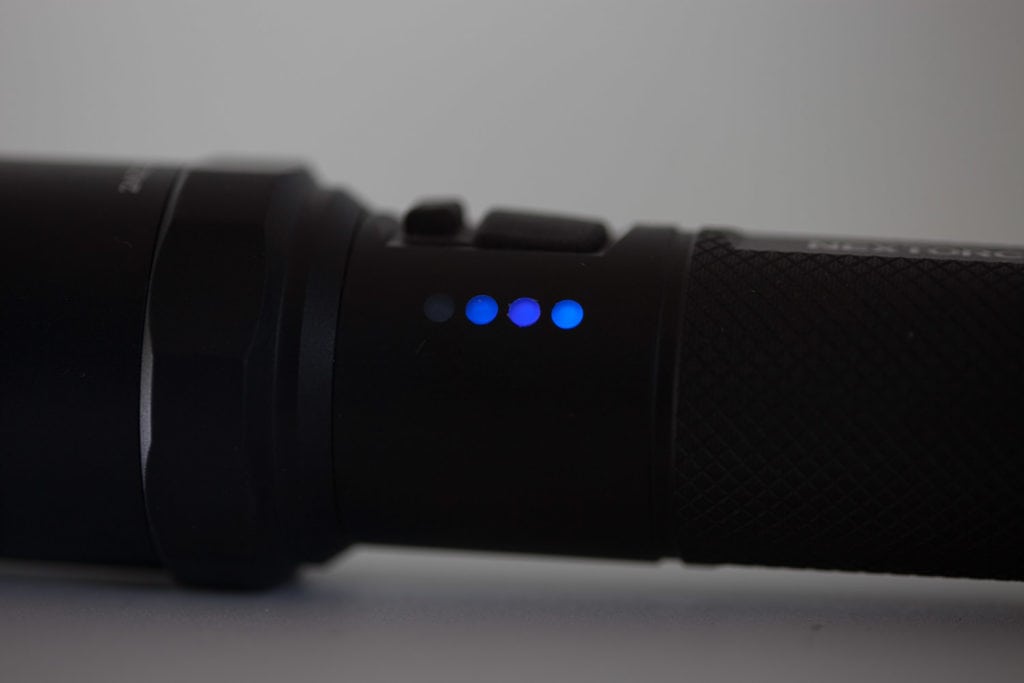
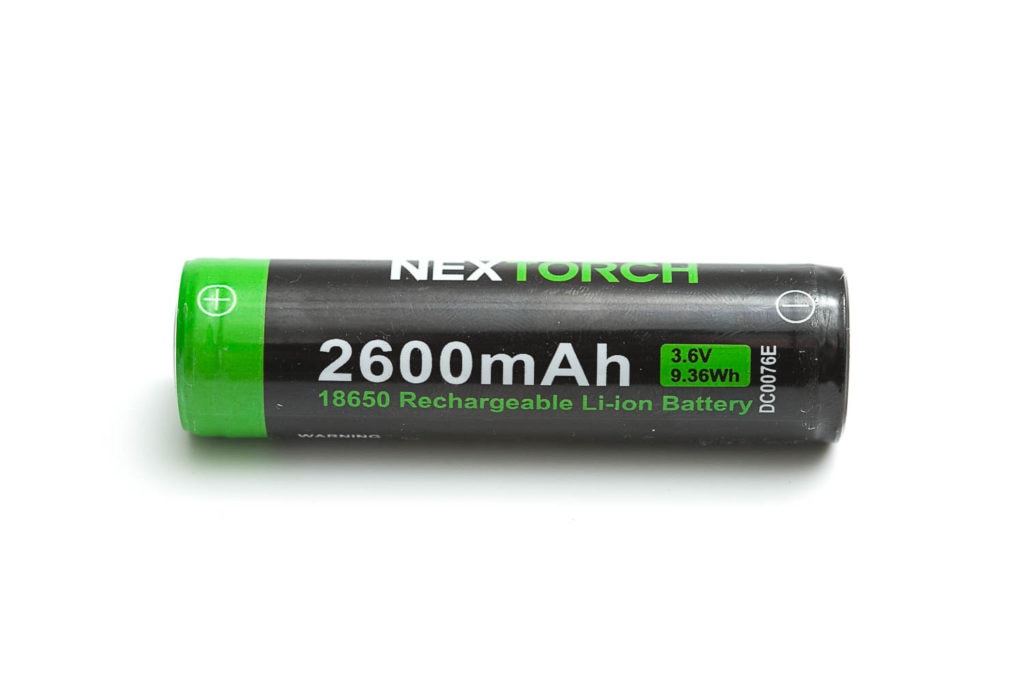
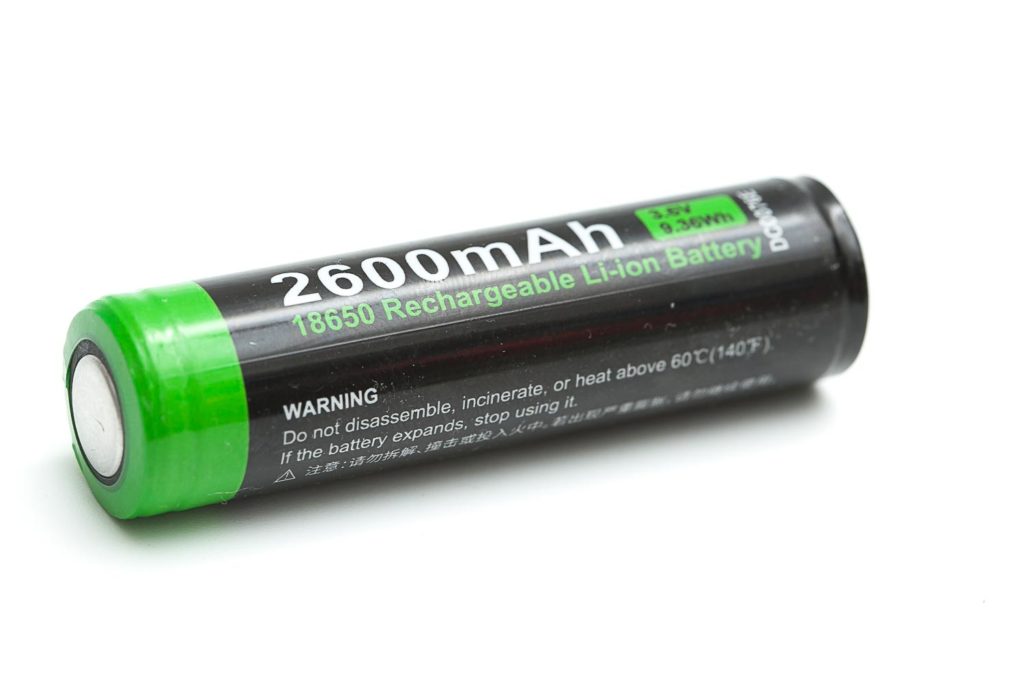
Performance:
All of my readings were taken from a fully-charged NEXTORCH 18650.
Lumen measurements:
All output numbers are relative to my homemade Integrating Sphere. It is now set up with an Extech SDL400 Lux Meter for measurements. For extremely bright flashlights (above approx. 5000 lumens) I am adding an ND filter, either a Kenko PRO1D ND-16 filter or a Hakuba HG Wide 8x ND filter. The base measurement is done with a Convoy S2+ that has been tested at 137 lumens.
Amps were measured with a Fluke 77III, at the tailcap.
| Mode | Amps | Specified | I measured |
|---|---|---|---|
| High | 3.38 A | 1300 lm | 1511 Lm |
| Med | 0.64 A | 350 lm | 357 Lm |
| Low | 0.09 A | 25 lm | 26 Lm |
Runtime:
The runtime test was done with the integrating sphere, including the Kenko Pro1D ND-16 filter and Extech SDL400 data logging Lux Meter.
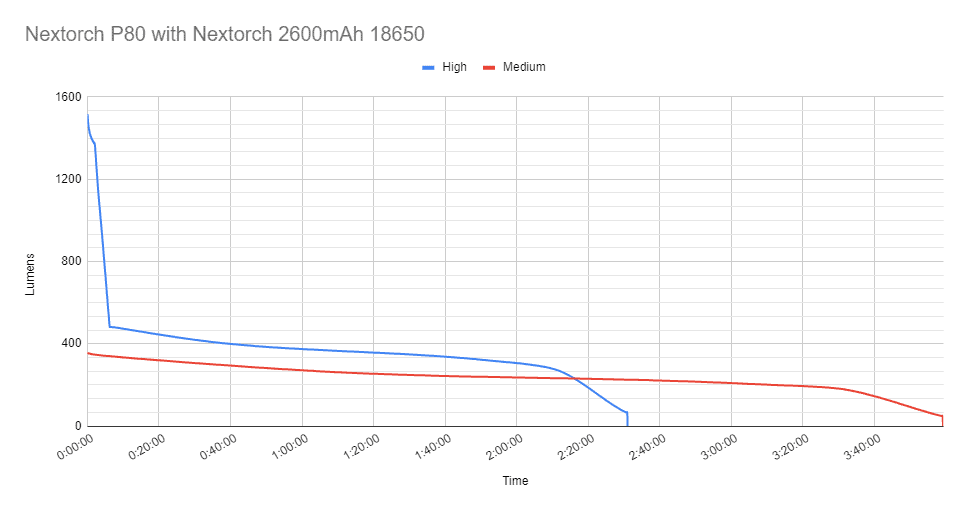
High drops to 480 lumens within 6.5 minutes. Then continue till it turns off at 2.5 hours!
Medium starts off at roughly 350 lumens and is relatively stable till 3 hours and 20 minutes but then drops quicker and turns off at 3 hours and 59 minutes. (4 hours)
Throw measurement:
Measurements were taken with a professional Hagner E4-X Lux Meter.
Using the high mode only, I get:
- Indoors (5m): 27000 cd / 329 meters / 1078 ft
Beamshots
1- Picture to show beam shape up close. Outdoors this shape is not visible, so please stop whining about this ;–)
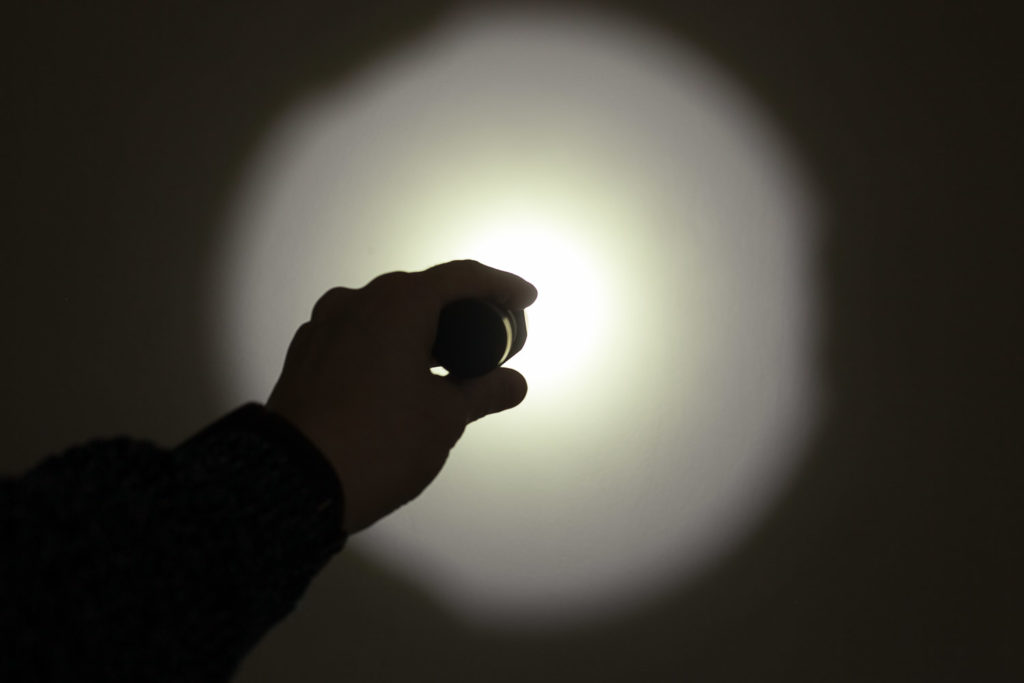
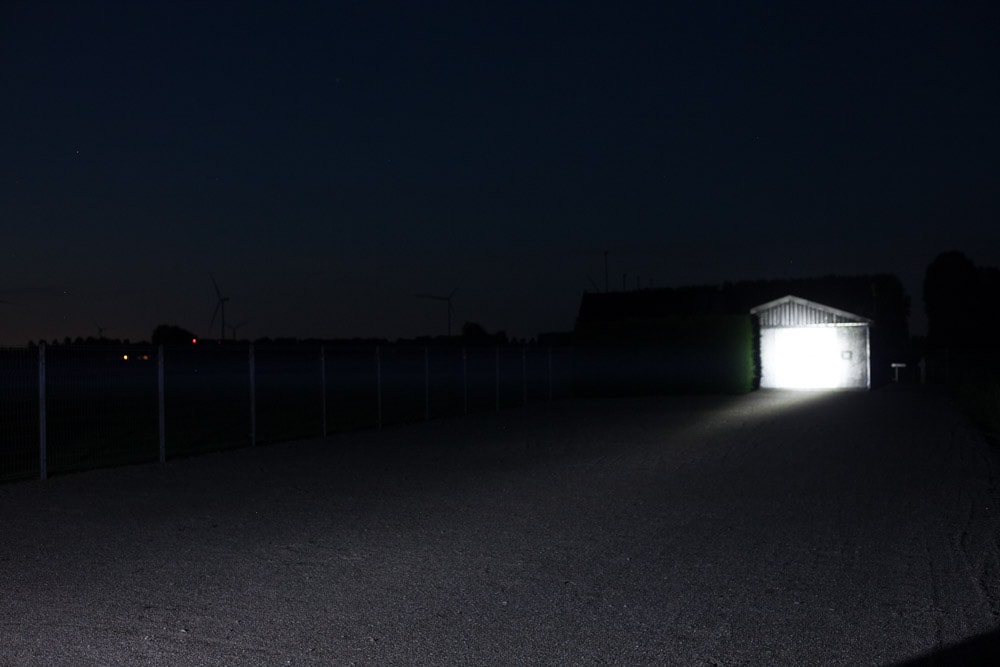
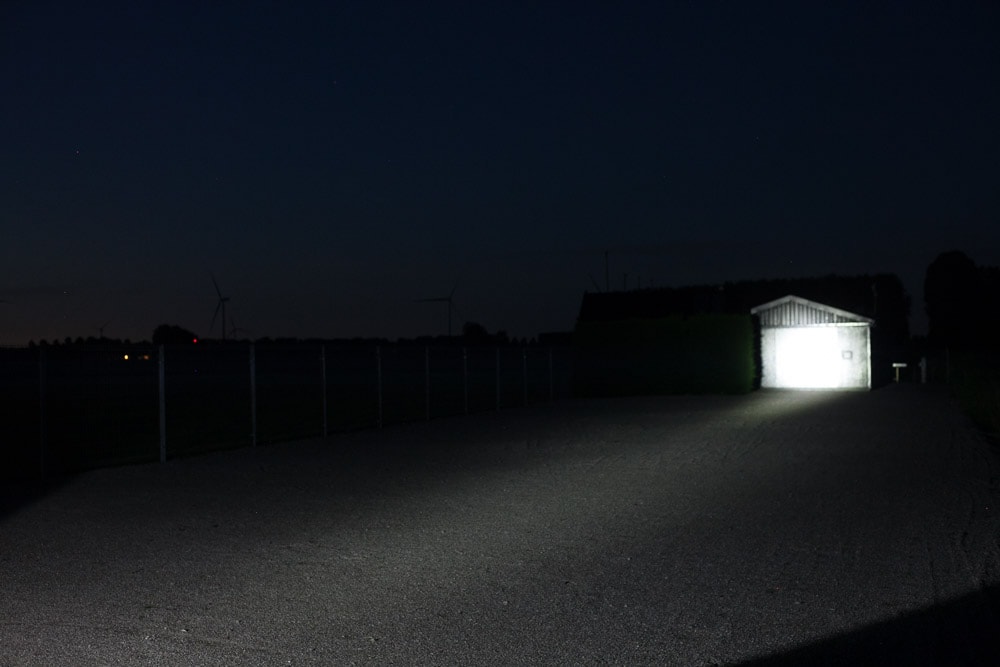
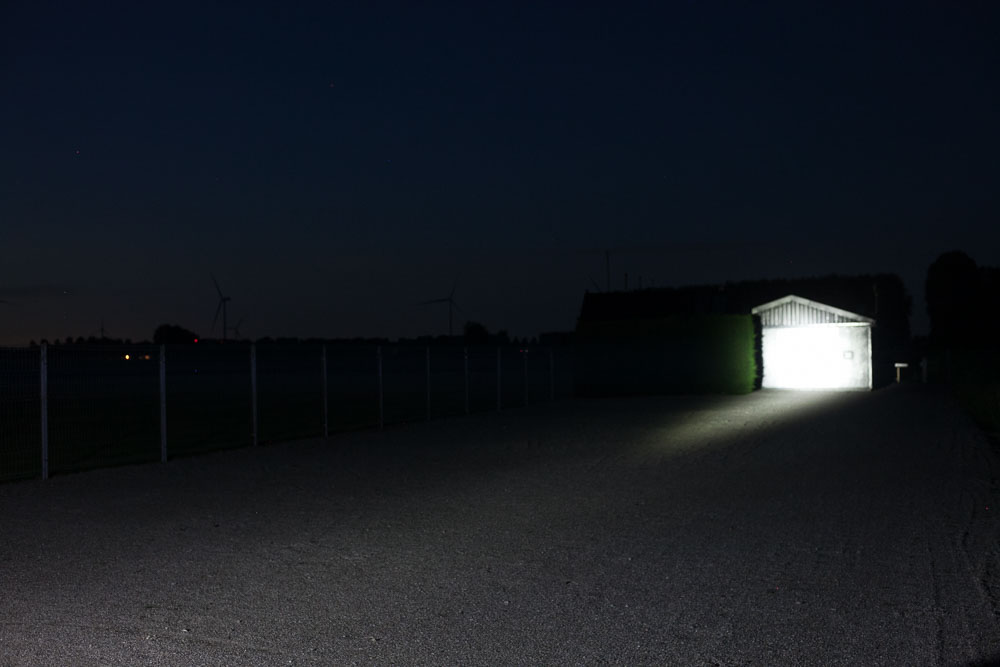
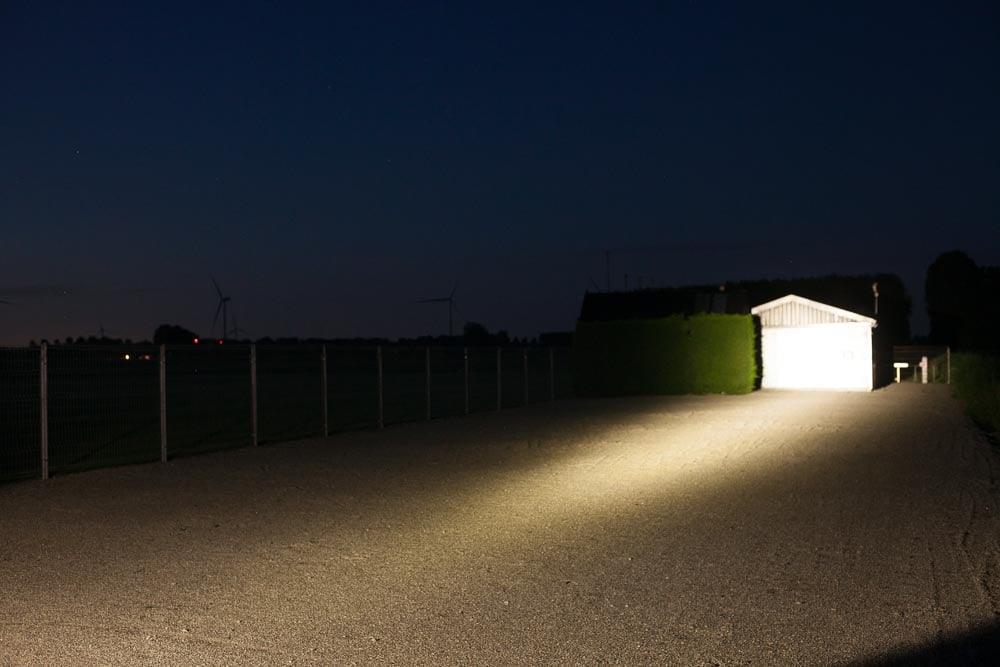
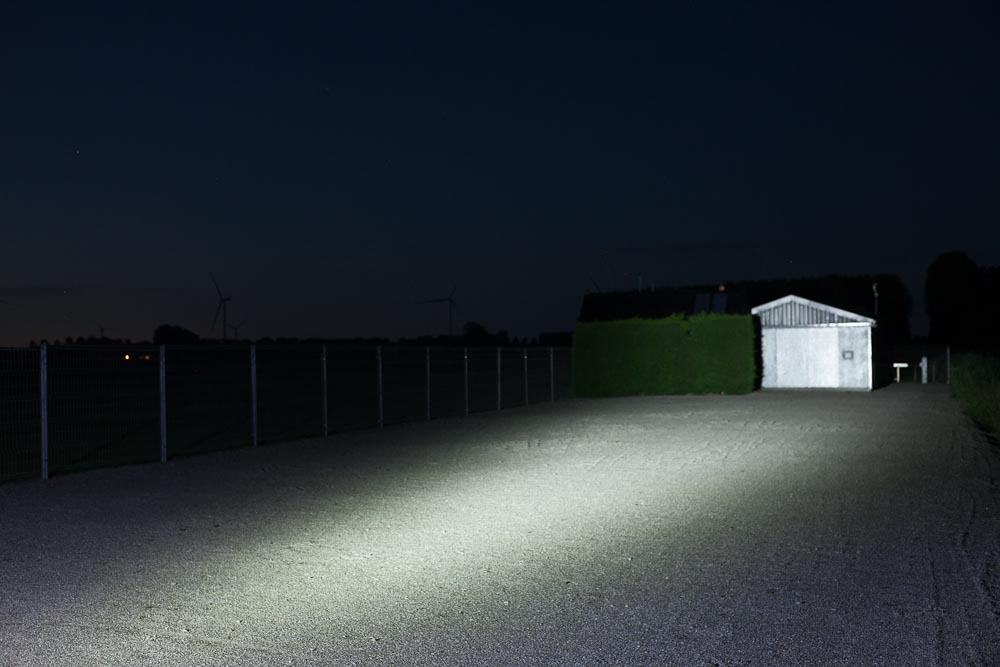
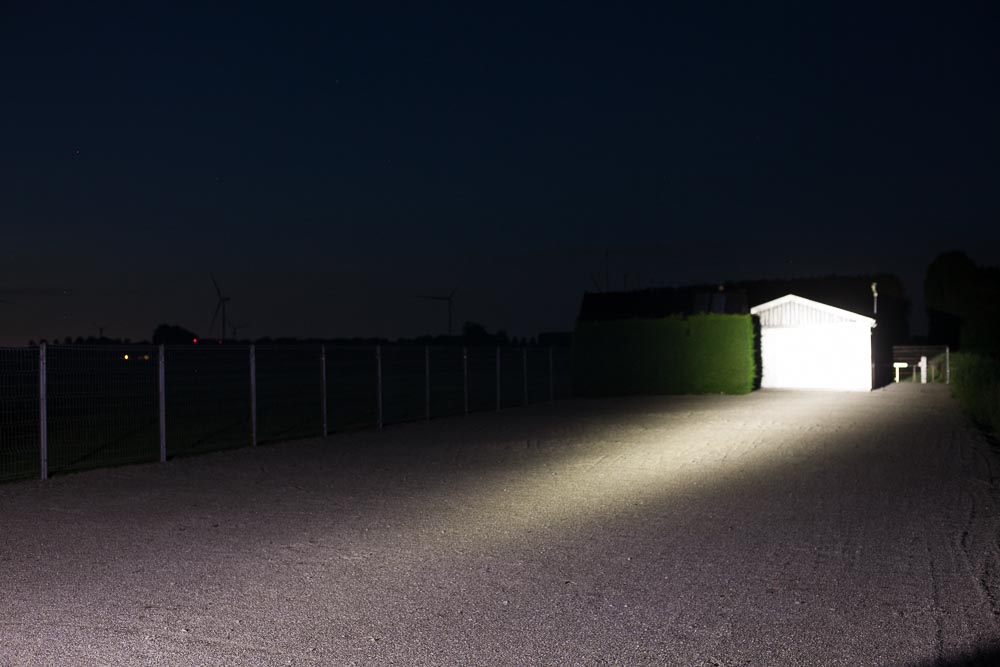
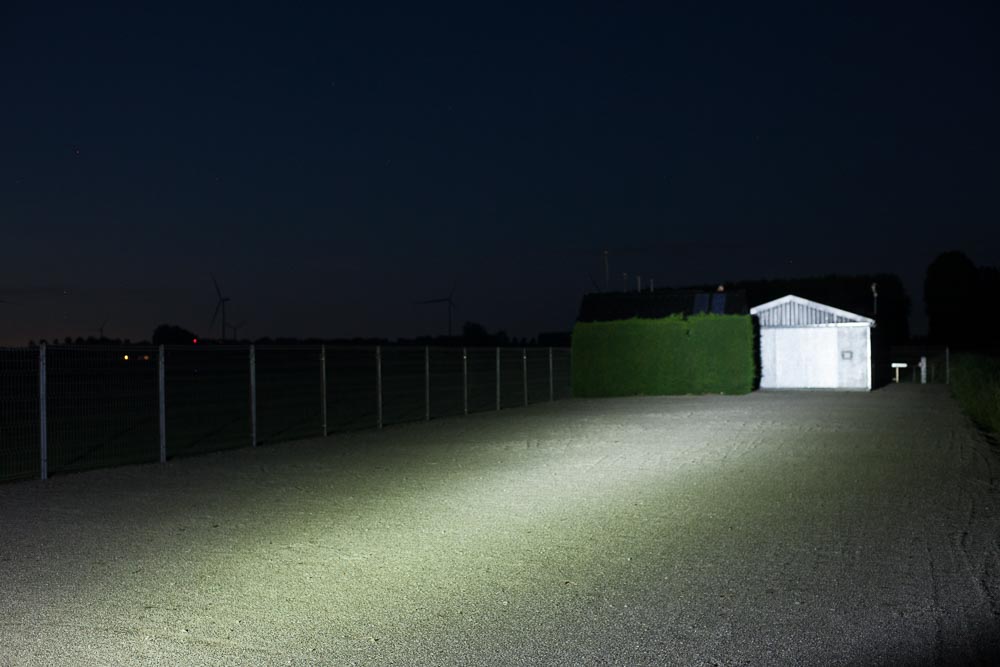
Disclaimer: This flashlight was sent to me for review at no cost, by Nitetorch. I have not been paid to review, nor have I been holding back on problems or defects.
Overall conclusion
Pros:
- USB C charge system
- Includes 18650 battery
- Extra button for direct strobe
Cons
- Battery tube is really thick
- UI is a little awkward
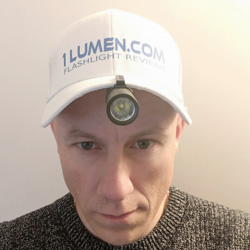
Overall Rating: very good
The P80 is a little different. With the 2 different switches (read the review) it feels a little strange at first. But I guess, the more you use it the more you might appreciate this functionality. Output isn’t the highest, but definitely fine for this type of light. Medium output runs for 4 hours from a 2600mAh battery, so that is great. The strike bezel is something only a few people will ever use I guess, but great to have. For people working in the security business, this light including the V5 holster, is a great combination
NEXTORCH P80 for sale
1lumen selects and reviews products personally. We may earn affiliate commissions through our links, which help support our testing.